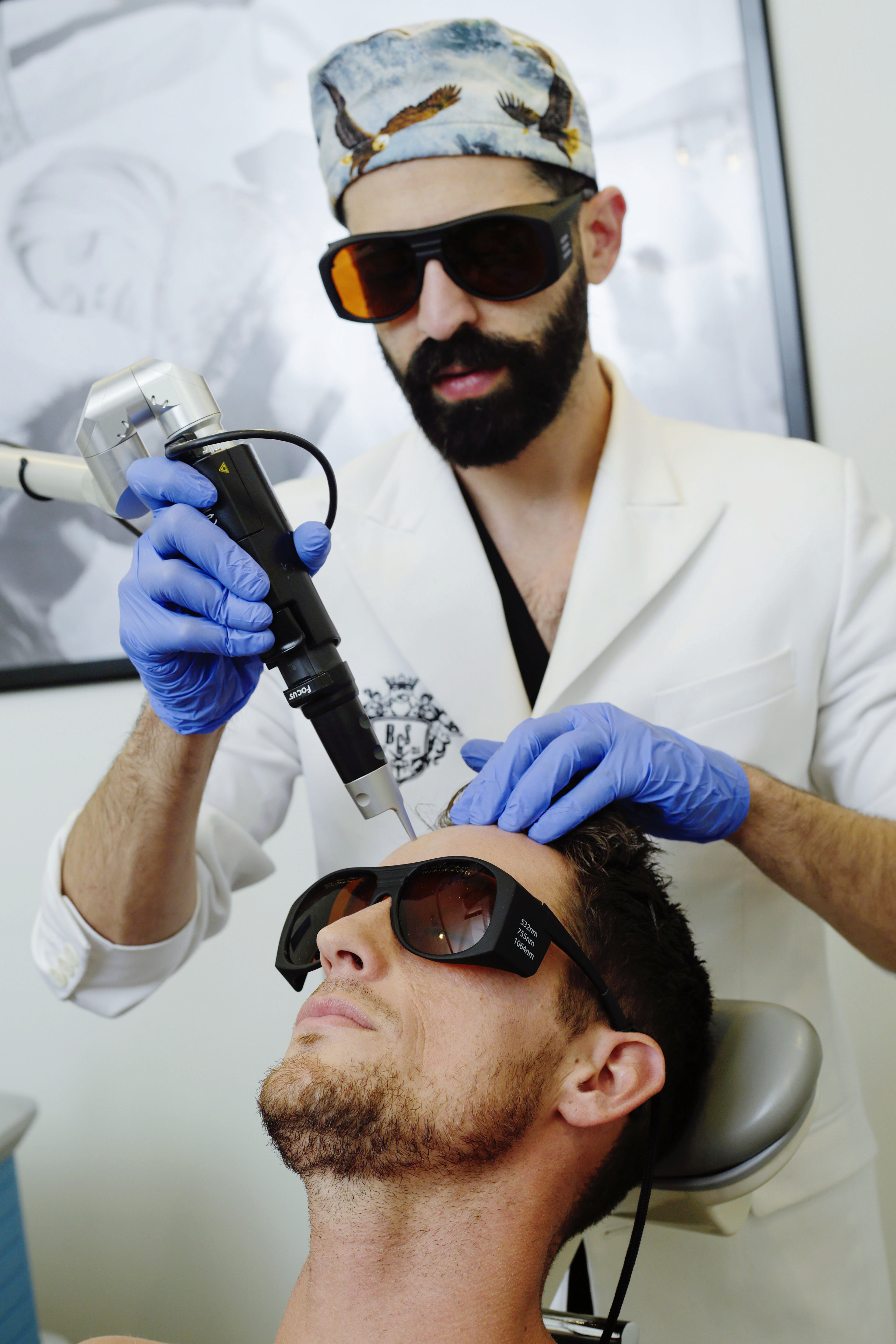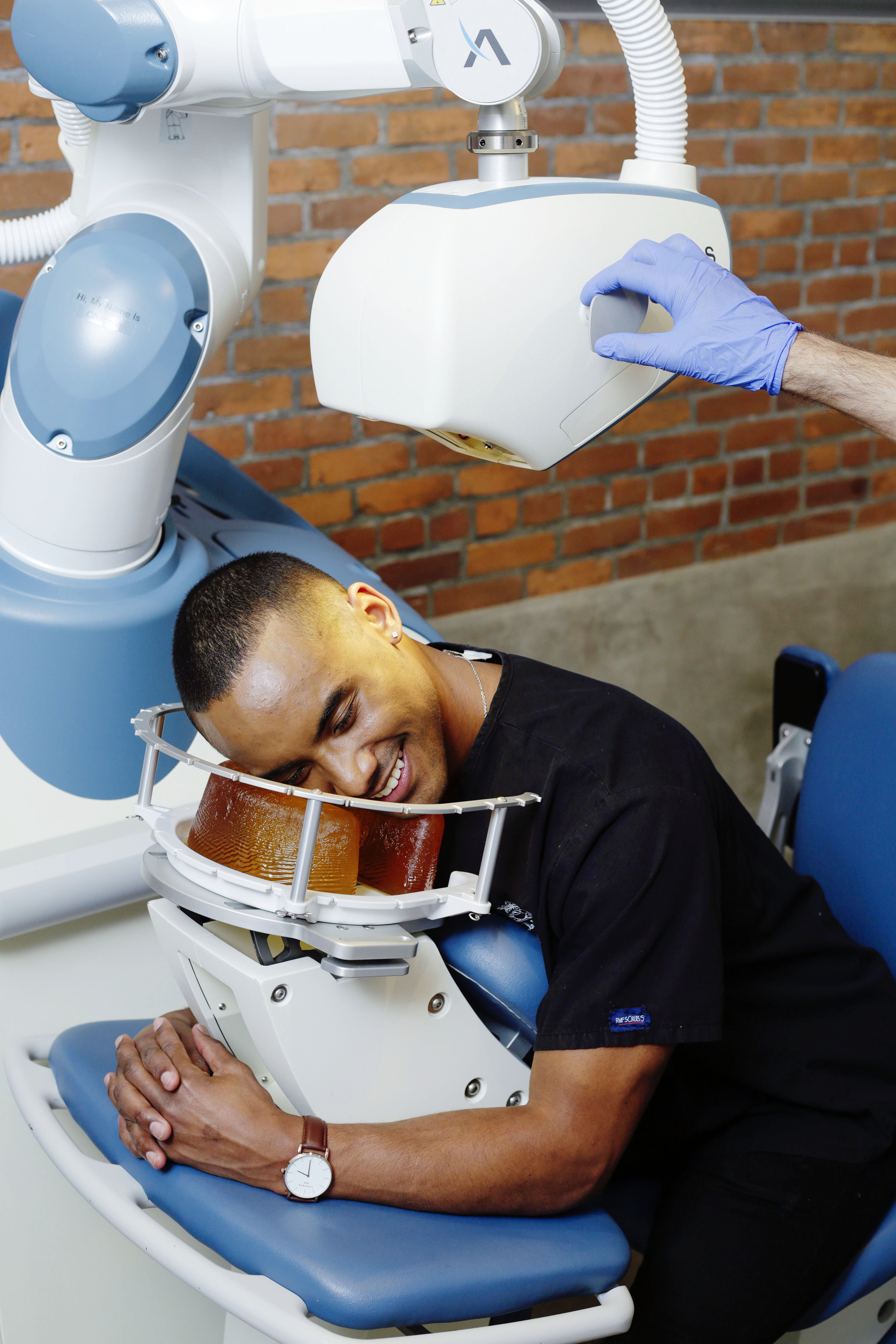
Neograft: The Ultimate Guide for Men
Hair loss is one of the biggest insecurities that men face. True, we probably put a lot of those insecurities on ourselves, but the stats on hair loss are so eye-opening that they may cause your hair to fall out all over again:
- According to the American Hair Loss Association, ⅔ of men in the US will experience significant or noticeable hair loss by the time they reach 35 years old. (By the time we’re 50, that number shoots up to 85%.)
- What’s more, for roughly 25% of guys, the process of balding begins before they even turn 21.
So what causes balding? Well, to get technical about it: Androgenic involutional alopecia. That may sound like a catechism you had to intone during Mass, but it’s actually a condition that causes your follicles to shrink and stop growing altogether.
Alopecia (for short) affects men differently. (Women aren’t totally safe from alopecia, but it affects them less frequently, and usually later in life.) The hormone that bolsters alopecia is dihydrotestosterone (“DHT”). At first glance, “di-whatever” looks like it can only be unlocked if you have a Ph.D. in molecular biology. But even us non-academics are probably familiar with one half of it: the “testosterone” part. In a lot of ways, just being a guy sets you up for going bald. (Aside: Bald men often grow thicker beards, an oddity than some scientists have termed the “androgen paradox.” In other words, an invitation from the cosmos to get a beard trim from BSG.)
That balding is such a widespread concern may be why men dish out more than $1 billion a year to combat our thinning hairlines. With all that money spent, wouldn’t you want to win that fight? If so, hair restoration physicians usually point you in one of two directions: NeoGraft or ARTAS. Both are medically-touted hair transplantation procedures, each with their own pros and cons.
Let’s examine each one side-by-side.

1. NeoGraft
Like ARTAS, NeoGraft is a hair restoration procedure, but what distinguishes it from ARTAS is that the main instrument in the procedure is a handheld device (whereas ARTAS is AI-driven). The procedure itself is made up of four steps:
- Extraction of hair follicles
- Counting, trimming, sorting grafts
- Recipient site creation
- Transplantation of grafts
Here’s what those steps boil down to: First, a proceduralist will consult with you about creating a hairline that’s right for your age and gender. Next, that physician will engage in some FUE, or “follicular unit extraction.” (Patients who undergo FUE will have to shave their heads prior to the procedure.) That means that the proceduralist will harvest (“extract”) follicles of your hair from the back of your head — above the nape of your neck, a zone of the scalp that’s resistant to testosterone, and therefore a place where few men lose their hair.
After that, he’ll separate the units into grafts that contain anywhere from 1-3 hairs. (A process that’s necessary for the hair to look natural.) After the grafts are shaped, the physician does some FUT, or “follicular unit transplantation”: creating recipient sites where the new hair is going and implanting the hairs.
Now that you know how NeoGraft works, here are the pros and cons:
- Pros
One of the reasons that some patients opt for NeoGraft is because its physicians promise a speedy recovery. (Within a few days of recovery, according to its site.) NeoGraft physicians administer anesthesia during the procedure, so some patients also report feeling little to no pain during the entire process.
- Cons
The NeoGraft instrument is essentially a handheld dentist drill with a suction attached to the other end. And since the instrument is handheld, and not robotically-guided, its performance is user-dependent. In other words, the outcome of the procedure hinges on whether you put that instrument into the hands of someone who’s done thousands of other NeoGraft procedures before — or someone doing his first procedure ever.
So the results aren’t guaranteed, and the risks are that the proceduralist will fatigue easily and the number of transections goes up. (A transection is an unintentional severing of a hair. Generally, it occurs where the hair is being harvested for donation — AKA “the donor zone” — or where the hair is going: the “recipient zone.”)

2. ARTAS
Okay, so what about ARTAS? As we mentioned above, the distinguishing feature of ARTAS hair restoration is that it’s robotically-controlled. For that reason, the steps of this procedure differ from those involved in NeoGraft:
- ARTAS Hair Studio
- ARTAS Robotic System
- Harvesting User Interface
- Recipient Site-Making
- Transplant Area
- Results
Let’s break down those steps. First, as in NeoGraft, a physician consults with you before the procedure. But this time, he’ll design your hair transplant onto a computer that will show you a 3D model of how you’re going to look following the procedure. (That way, you can visualize what you’re paying for and talk through any changes you might want to customize.)
After that, the ARTAS robot identifies the optimal hairs for your transplantation — separating them into “future harvest,” “current harvest,” and “completed harvest.” Then the site-making phase: The proceduralist uploads his hair restoration design into the robot, which transplants the new hairs into the thinning patches of your scalp. The results? “Noticeable, permanent, thicker visible hair growth starting at six months with continued growth over time.”
And now for the pros and cons:
- Pros
Because the ARTAS procedure uses artificial intelligence to guide its decision-making, it’s vastly more precise than previous methods, many of which were handheld and subject to human error. The essential motion of this process consists of punching in thousands of hairs, which becomes tedious and repetitive — and robots do repetitive motions with much higher accuracy than humans do. A physician who performs a hair transplantation procedure with less than 10% transections is considered quite skilled. By contrast, the ARTAS robot’s transection rate hovers around 1-2%.
The other crucial difference between ARTAS and NeoGraft is the punching mechanism. The ARTAS instrument scores the skin and dissects around the hair follicle with a blunt instrument so that nothing sharp comes into contact with the hair follicle or bulb. Remember how the NeoGraft instrument was a dentist drill with a suction attached to the other end? That drill is sharper than the ARTAS instrument, meaning it could potentially do more damage underneath the skin.
Since NeoGraft uses a suction, the process of harvesting a graft with it causes tissue to get sucked up into a collection chamber, which puts constant pressure on the grafts. True, an experienced surgeon knows how to aspirate liquid to keep the grafts moist. But if you’re a novice, all your grafts get sucked up and bagged in vacuum tubes, which can traumatize the tissue. (The ARTAS robot never experiences this problem.)
- Cons
The downside that patients generally mention regarding the ARTAS procedure is that, yes, the robot produces high-resolution imagery and works with high accuracy, but the robot is only as accurate as the doctor or technician that programs it. Some would argue that the difference between the ARTAS robot and the old handheld method is akin to the difference between a craftsman and someone operating a machine or downloading a file. Other would disagree. Consult with experts like the pros at BSG for an insider’s take on which procedure is right for you.
3. So, Which One is Right For You?
ARTAS or NeoGraft — which one’s best for you? Well, before you choose, keep in mind that men who suffered hair loss toward the front of their scalps but who have dense donor zones (where the hair follicles will be harvested) along the back of their heads are good candidates for the NeoGraft procedure. Meanwhile, everyone is a good candidate for ARTAS. Whichever procedure you choose, keep in mind that while both can restore thinning hair, neither one can rejuvenate your hair to the density it had when you were, say, 15 years old.
But that’s okay. You’re older now. You’re adulting. So if you’re concerned about your hair, yes, get out in front of this problem. But also keep in mind that BSG is essentially a spa for men. We try to make guys overcome their shyness and feel good about themselves. So if you can’t afford NeoGraft or ARTAS right now, or if you’re still undecided about them, here are some of our tips on how to get confident about yourself and your look:
- Keep it short. True, there are certain hairstyles that balding men simply can’t rock. But one that does look good on them is the short look. Own your hair loss. Shave it short, which, in another paradox, always makes you look like you have more hair than if you tried that faux pas of all hairstyle faux pas — the dreaded combover. (Dispatch from the world: You’re not fooling anyone with that look.)
- Stay fit. Losing your hair is a surefire way to blast away at a guy’s self-confidence. That’s unfortunate, but it doesn’t need to be permanent, especially since another way to boost up that confidence is to work out on the reg and stay shredded. The only downside is that all that lifting and HIIT’ing may boost your testosterone, looping you back to the whole DHT-overload problem. But, really, after awhile, the vicious cycle becomes a virtuous one — you’ll be bald, but ripped and sharp-looking. Embrace it.
- Laser facial. Now that there’s no hair curtaining your face, that mug of yours will be on full display, which may be incentive enough for you to smooth out and your skin. We’re talking minimizing or getting rid of acne, freckles, sunspots, melasma, any variety of scarring, or any general blemishes or rough surfaces. Sure, hair always looks nice, but can anything trump a clean face and a bright smile?

4. In summary …
- Hair loss is a big deal for men. For some guys, it can crush your self-esteem. And losing an integral part of your appearance that you’ve had for many years can throw you for a loop. What’s your look like now?
- Let’s be clear about something: You are fine the way you are. And if you want to keep working on yourself, one of the first things you can do is to maintain a daily workout regimen, which will keep you feeling upbeat and prepared to take on the world.
- However, if you want to invest in hair transplantation and regeneration, we’re here for you. In some circles, NeoGraft is considered to be slightly outdated, but it is offered at many hair restoration centers. BSG offers state-of-the-art ARTAS hair restoration treatment. Here’s the rundown on ARTAS:
- ARTAS zeroes in on the best hair grafts to take from the donor site (usually in the back of the head, where men tend not to experience much male pattern baldness). We consider ARTAS “state-of-the-art” because the procedure uses the most sophisticated AI to identify which grafts are the best ones to harvest.
